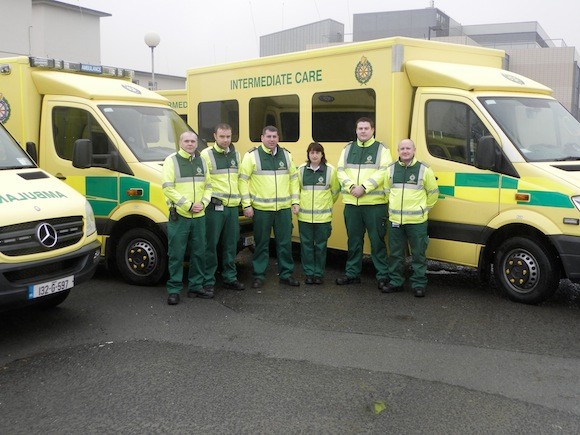Image may be NSFW.
Clik here to view.
The HSE’s National Ambulance Service (NAS) has introduced eight new Intermediate Care Ambulances in the North West as part of its commitment to develop and improve response times to life threatening emergency calls in the region.
The introduction of the Intermediate Care Ambulance service is a central part of the improvement of response times for the ambulance service in the North West region.
The eight new Intermediate Care Ambulances, costing approximately €200,000 each, will take over roles that were previously carried out by the Emergency Ambulances in the area.
These roles include inter-hospital transfers and transporting patients from acute hospitals such as Letterkenny Hospital and Sligo Regional Hospital to set-down facilities, particularly nursing homes.
The staff that crew the new Intermediate Care Ambulances are trained as Emergency Medical Technicians and also have been trained in emergency blue light driving.
They will form the backbone of the NAS in the North West region, freeing up Emergency Ambulances crewed by paramedics who have up until now been carrying out this work.
It is also envisaged that the crew of this service may at times be required to attend a life threatening call if the Control Centre identifies the vehicle as the nearest available resource.
Ambulance Control will task them as a first responder to the emergency until the arrival of an Emergency Ambulance that will be crewed by either Advanced Paramedics or Paramedics. They will also play a central role in the event of a Major Emergency in the region.
Welcoming the introduction of the Intermediate Care Ambulances, Bill Forbes, Operations Performance Manager for the North West region said, “These new ambulances will look after patients already within the healthcare system, which means that the emergency ambulances will be able to focus on services delivered by the Paramedics and Advanced Paramedics on Pre-Hospital Emergency Care calls.
“The Intermediate Care Service is an essential part of how the NAS is modernising, organising and delivering ambulance services by using available resources to their full potential. This is done to ensure the most effective service for patients moving through the healthcare system.”
